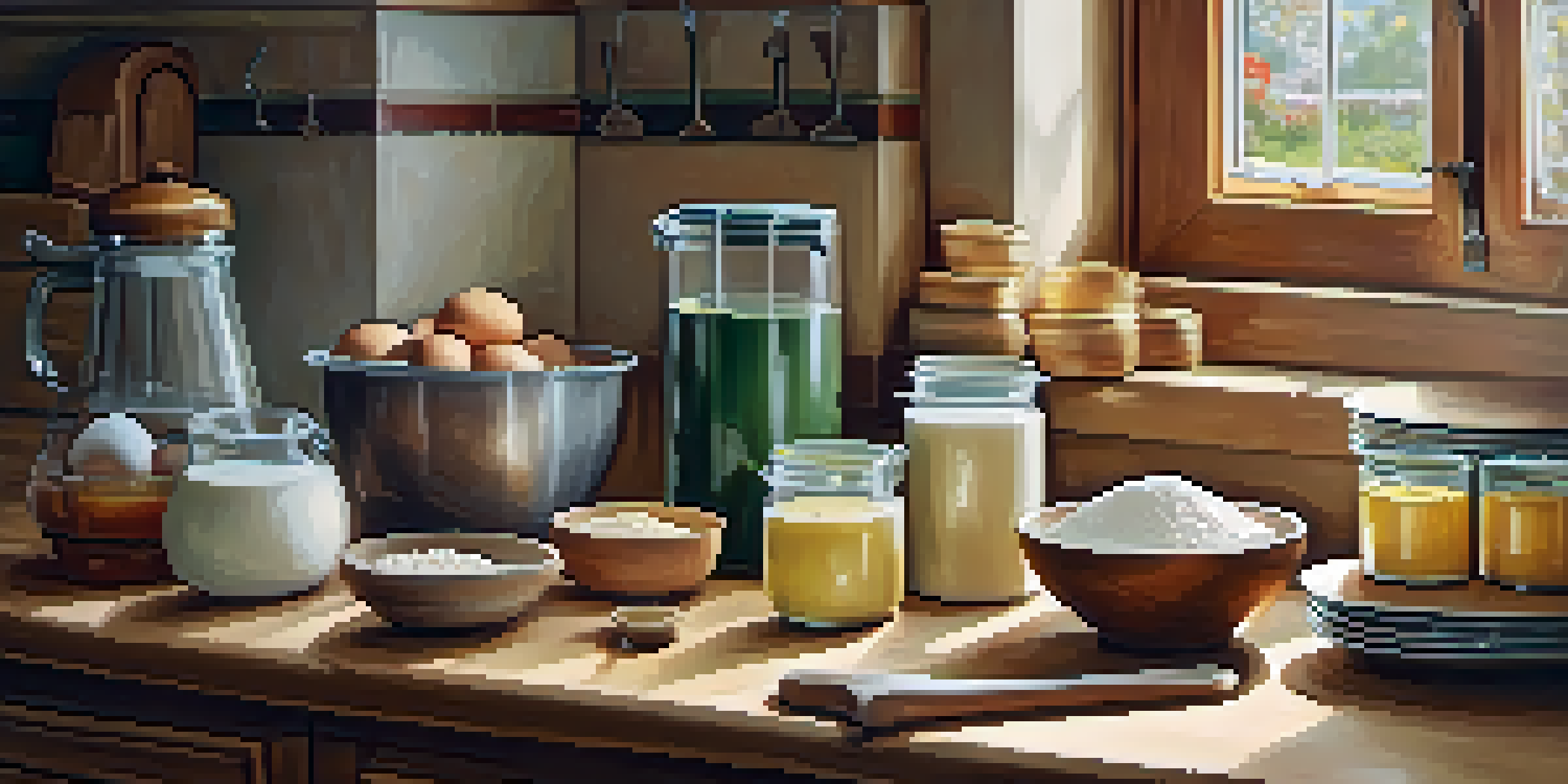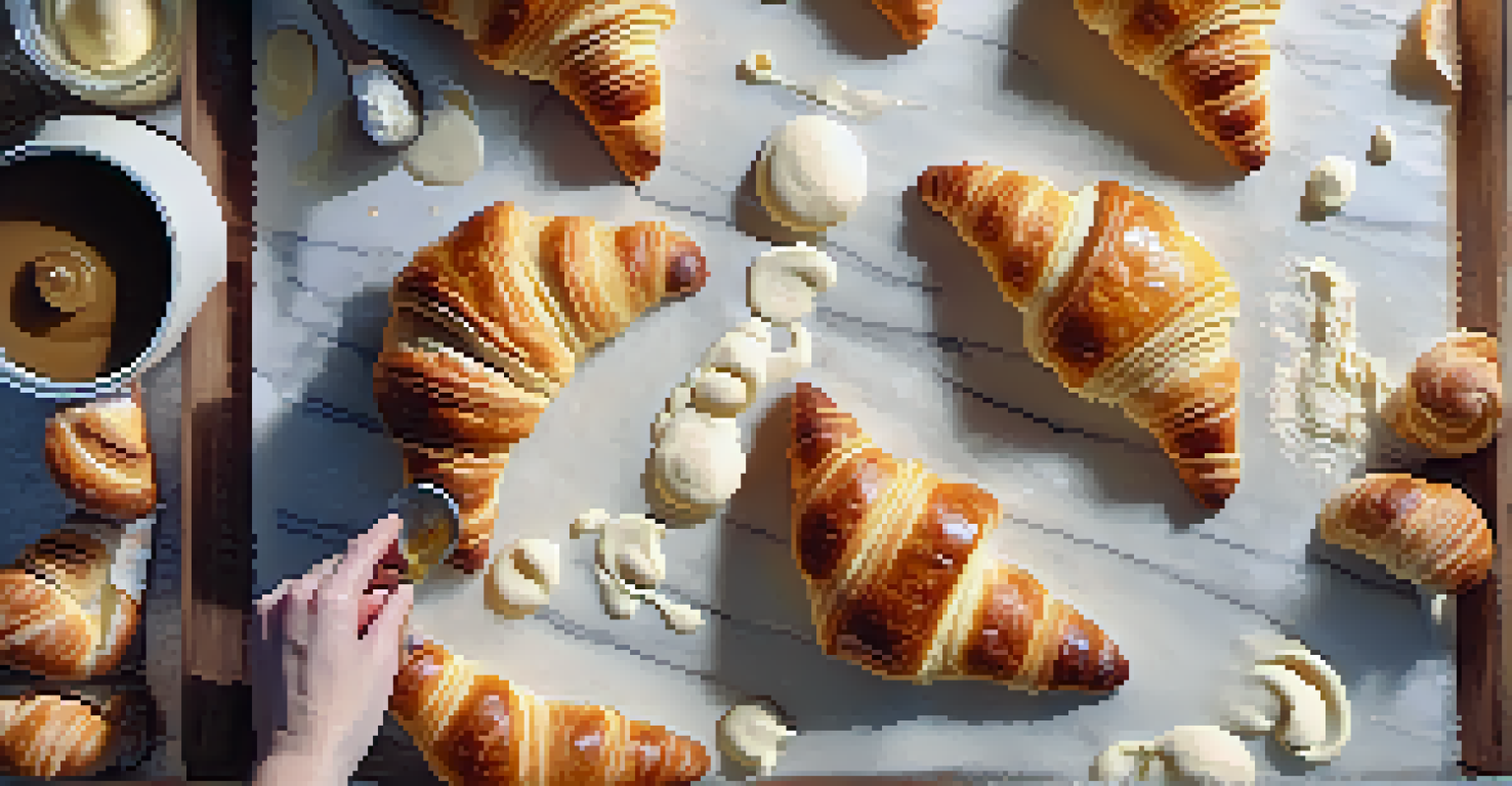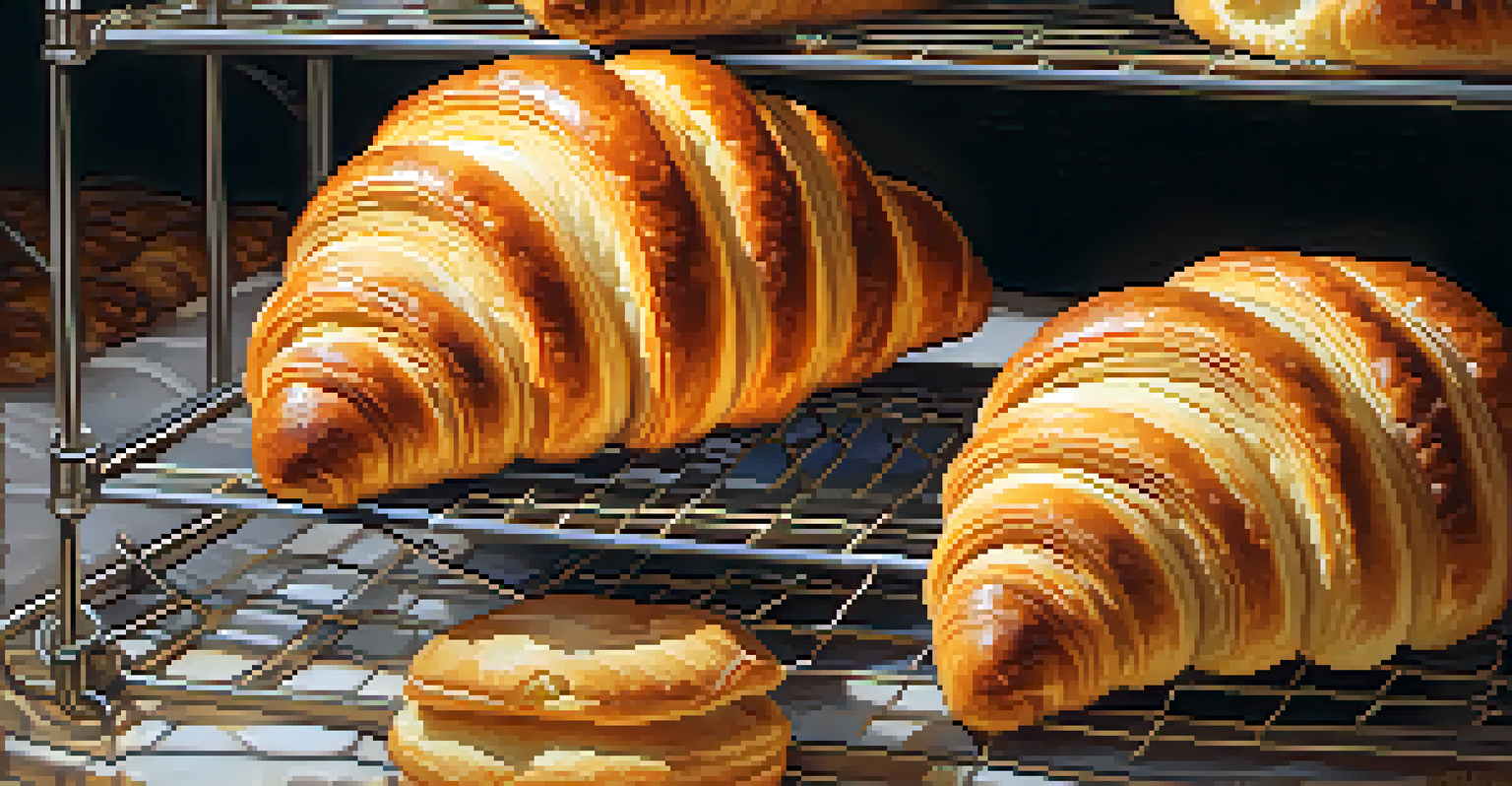The Science of Baking: Techniques for Perfect Pastries

Understanding the Science Behind Baking Ingredients
Baking is as much a science as it is an art, and understanding your ingredients is crucial. Each component—flour, sugar, eggs, and butter—plays a unique role in the final product. For instance, flour provides structure due to its gluten content, while sugar not only sweetens but also affects texture and color.
Baking is like love; it's a form of expression that requires a recipe, a little bit of creativity, and a whole lot of patience.
The interaction between these ingredients can be likened to a well-rehearsed orchestra, where each musician (or ingredient) must know their part to create a harmonious pastry. For example, too much flour can lead to a dense texture, while too little can result in a collapse.
Understanding these roles allows bakers to manipulate recipes effectively. This knowledge is empowering, enabling you to tweak ratios and achieve the desired results, whether you're making flaky croissants or airy puff pastries.
The Importance of Accurate Measurements in Baking
Baking is all about precision, and accurate measurements are key to success. Unlike cooking, where a pinch of this or a dash of that can be forgiven, baking requires specific ratios to achieve the desired texture and flavor. A kitchen scale can become your best friend here, as it ensures you're using the exact amount of each ingredient.

Consider this: if a recipe calls for a cup of flour but you accidentally use too much, you may end up with a dry and crumbly pastry. On the other hand, under-measuring could result in a soggy mess. This is where measuring cups and spoons come into play, but remember that weights are often more reliable.
Ingredients Are Key to Baking
Understanding the unique roles of flour, sugar, eggs, and butter is essential for creating successful pastries.
So, before you dive into your baking adventure, take a moment to gather your tools and ensure everything is measured correctly. Trust me, your pastries will thank you for it!
Mixing Techniques: Creaming, Folding, and More
Mixing is a crucial step in baking that can significantly impact the texture of your pastries. Different techniques yield different results; for instance, the creaming method—where you beat sugar and butter together—creates a light and airy base, perfect for cookies and cakes. This process introduces air into the mixture, helping your baked goods rise.
The secret to baking is to understand that everything you create is a reflection of yourself.
On the flip side, folding is a gentle technique used to maintain the airiness in batters, especially when incorporating whipped cream or egg whites. Imagine folding a delicate piece of paper—too much force will ruin its shape, just as it would with your batter.
Understanding when to use each technique is essential for achieving the perfect pastry. Each method has its purpose and can transform a simple recipe into something extraordinary.
The Role of Temperature in Baking Success
Temperature can make or break your pastry, and it’s vital to pay attention to both ingredient and oven temperatures. For instance, using cold butter in pastry dough is key to achieving a flaky texture. The cold butter creates pockets of steam as it bakes, resulting in that desired flakiness.
Conversely, preheating your oven is crucial. If you place your pastries in a cold oven, they may not rise properly, leading to dense and undercooked results. It's like starting a marathon without warming up—your body (or pastry) won’t perform at its best!
Accurate Measurements Matter
Precision in measuring ingredients is crucial, as even small discrepancies can lead to undesirable textures in baked goods.
To ensure success, always check your ingredients and oven temperature before starting. This small step can save you from a baking disaster and lead to beautifully baked pastries.
The Art of Shaping and Forming Pastries
Once your dough is ready, the next step is shaping, which is where creativity comes into play. Whether you're rolling out dough for tarts or cutting shapes for cookies, this part of the process allows you to express your style. Think of it as sculpting—every pinch and fold adds character to your pastry.
Shaping also affects the final texture and taste. For example, a well-formed croissant allows for even baking and a better rise, while an unevenly shaped one can lead to inconsistencies. It’s also a great way to impress your friends and family with your baking skills!
So, take your time and enjoy the shaping process. It’s not just about the end result; it’s about the creativity and joy that comes with each twist and turn of your dough.
Baking Times: Knowing When Your Pastries Are Done
Perfect timing is essential in baking, as underbaking or overbaking can ruin even the best recipes. A good rule of thumb is to start checking your pastries a few minutes before the recommended baking time. The golden-brown hue and pleasant aroma are often tell-tale signs that your pastries are ready.
However, each oven is different, and some may run hotter or cooler than others. Using an oven thermometer can help you gauge the actual temperature and adjust accordingly. Think of it as getting to know your baking partner—it’s all about finding the right rhythm.
Cooling and Storing Pastries
Proper cooling and storage techniques extend the freshness of pastries, ensuring they taste great even after baking.
Don’t hesitate to trust your instincts, too. If something smells delicious, it’s often a good sign that it’s time to take it out. With practice, you’ll develop an intuition for baking times that will serve you well.
Cooling and Storing: Extending the Life of Pastries
After baking, it’s important to allow your pastries to cool properly. This step is often overlooked, but cooling is essential for setting the texture and flavor. For instance, cookies continue to bake on the tray even after being removed from the oven, so giving them a moment to rest helps prevent overbaking.
Once cooled, proper storage is equally important to maintain freshness. Airtight containers can help keep your pastries from becoming stale, but remember that some pastries, like croissants, are best enjoyed fresh. If you have leftovers, consider freezing them to preserve their quality.

Taking the time to cool and store your pastries correctly can make all the difference in ensuring they taste just as good the next day—if they last that long!